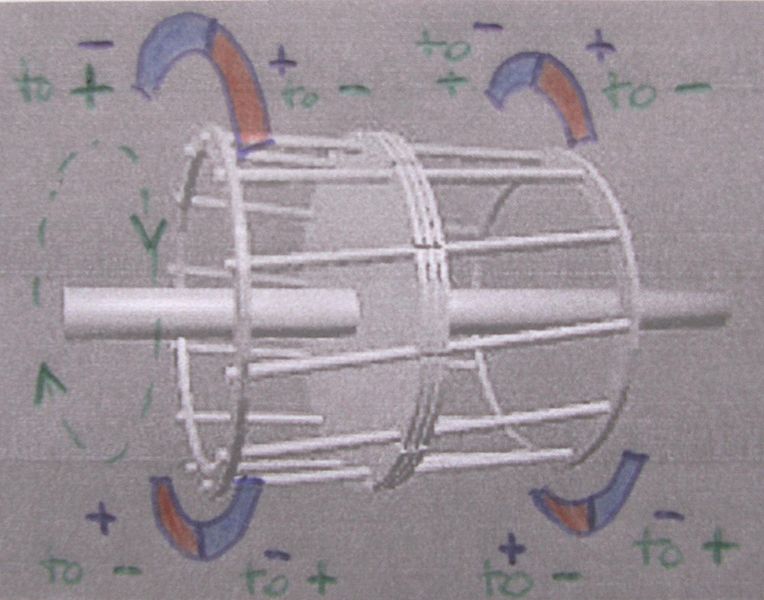
Original file (1,704 × 1,338 pixels, file size: 196 KB, MIME type: image/jpeg)
A schematic explaining the workings of the induction motor (squirrel cage rotor type). As the + and - electromagnets attract each other, the rotor (which is free to spin in the center between these two sets of magnets magnets) will rotate as it wants to channel the electricity as good as possible between the 2 poles (hence requiring it to change orientation just a bit). The moment the rotation is completed, one might think that the motor will simply stop (see http://www.howstuffworks.com/motor.htm ). However, since the induction motor is a alternating current motor (hence working on a current that constantly swithes polarity), the electromagnets also constantly change polarity; this keeps the rotor spinning endlessly.
The original image was made by User:Czenek, see http://en.wikipedia.org/wiki/File:Squirrel_cage.jpg . The image was printed, updated by hand, and scanned. The green arrow on the drawing represents the rotation. The blue + and - indicate the polarity of the magnets in the beginning, the green + and - indicate the polarity of the electromagnets after a few milliseconds.
Note that the article at http://www.howstuffworks.com/motor.htm (about brushed DC engines) can be used to get a basic understanding of electric motors, which can then be extrapolated to induction motors. However, there is a small difference though: brushed & brushless DC engines work in that the same poles push each other away, induction motors work on the principle that opposite poles attract.
File history
Click on a date/time to view the file as it appeared at that time.
| Date/Time | Thumbnail | Dimensions | User | Comment | |
|---|---|---|---|---|---|
| current | 15:16, 2 February 2011 |  | 1,704 × 1,338 (196 KB) | KVDP (talk | contribs) | A schematic explaining the workings of the induction motor (squirrel cage rotor type). As the + and - electromagnets attract each other, the rotor (which is free to spin in the center between these two sets of magnets magnets) will rotate as it wants to c |
You cannot overwrite this file.
File usage
There are no pages that use this file.